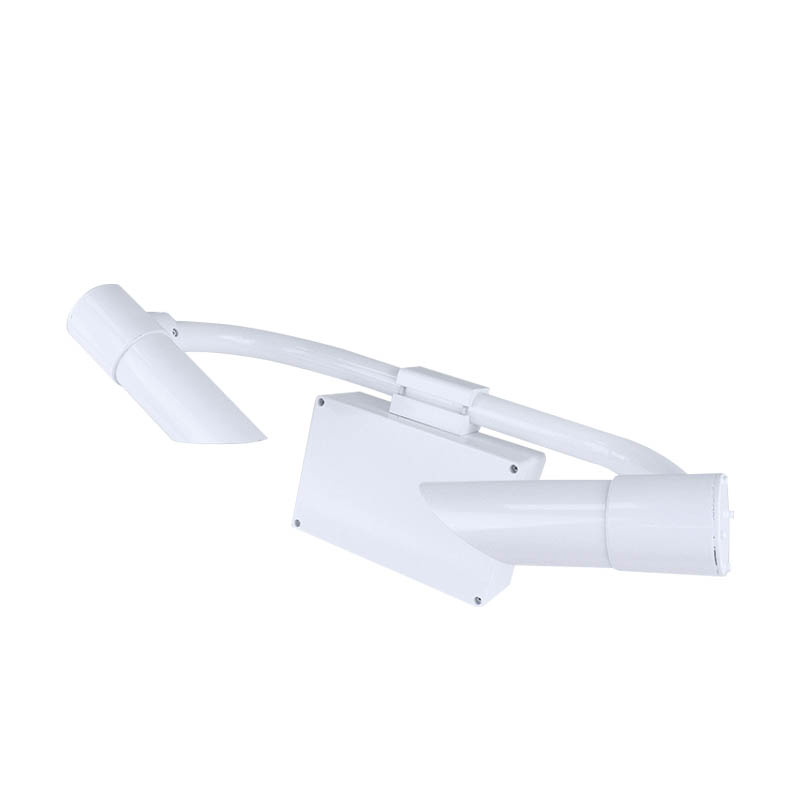Tianqiong Sensor IOT Technology Co., Ltd
Sales Manager:Ms. Emily Wang
Cel,Whatsapp,Wechat:+86 15898932201
Email:info@fengtutec.com
Add:No. 155 Optoelectronic Industry Accelerator, Gaoxin District, Weifang, Shandong, China

Sales Manager:Ms. Emily Wang
Cel,Whatsapp,Wechat:+86 15898932201
Email:info@fengtutec.com
Add:No. 155 Optoelectronic Industry Accelerator, Gaoxin District, Weifang, Shandong, China

Model:FT-N2
Brand:tianqiong
1.Atmospheric Visibility Sensor Product Introduction
Atmospheric Visibility Sensor measures atmospheric visibility in the range of 1m to 2km, providing visibility distance measurement reports for fog and snow.The N2 Atmospheric Visibility Sensor uses forward scattering method to measure the total extinction coefficient of the air, and then calculates the current visibility, which is widely used in road traffic, meteorological and other industries.
2.Technical features of Atmospheric Visibility Sensor
1.The instrument shell is high-quality aluminum material, and is sprayed after anodization.The whole machine has excellent waterproof, dustproof and collision-proof performance;
2.The instrument transmitting and receiving lenses are designed downward to greatly reduce interference with sunlight and other miscellaneous light;
3.Identification of weather phenomena can identify weather phenomena such as fog, rain, snow, mixed precipitation, sunshine, etc., with a high recognition rate;
4.Built-in watchdog circuit to ensure reliable and stable outdoor operation for a long time;
5.The instrument communication and power interfaces both contain lightning protection designs, which greatly reduce lightning strikes and static damage;
6.12~24V wide voltage power supply, total power is about 1W, and the power consumption is extremely low.It can be powered by solar panels, batteries, etc.for a long time;
7.The digital interface uses RS485 or RS232, the standard MODBUS protocol, and there is no need for protocol adaptation;
8.The instrument can output 15s, 1min, and 10min visibility values, and can be read directly without configuration, making it more flexible to use.
3.Atmospheric Visibility Sensor implementation standards
QX/T 536-2020 Forward scattering visibility meter test method
4.Atmospheric Visibility Sensor Technical Indicators
| Main parameters | Parameter range | Resolution | error |
| Range | 2km | 1m | ≤2km ±2%2km~10km ±5%>10km ±10% |
| Repeatability | ≤4% | ||
| Weather phenomena | Fog, rain, snow, mixed precipitation, sunny | ||
| Weather phenomenon recognition rate | ≥95% | ||
| Operating temperature | -40~60℃ | ||
| Working humidity | 0~100%RH | ||
| Working power supply | 12~24V | ||
| Power consumption | 1W | ||
| size | 610x230x360mm (Length x Width x Height) | ||
| weight | ≤10kg | ||
5.Atmospheric Visibility Sensor installation instructions
1.Installation location
The installation location of the visibility meter needs to be selected on an open, flat, unobstructed ground, away from buildings, trees, shrubs, peaks and other objects.This ensures that the instrument's observation range is not blocked and the data is more accurate.
Unnecessary optical interference should be avoided.The receiver of the visibility meter should be installed to a strong light source (such as sunlight), and the transmitter and receiver should be located in the north-south direction.
2.Installation height
The installation height of the visibility meter should be greater than 1.5m and less than 3m.The installation height exceeds 3m, the corresponding height should be calibrated.
3.Installation steps
3.1 Before installation, users should prepare columns and install them on the columns using the clamps provided by the instrument.
3.2 Lift the instrument to a suitable position, install and fix the visibility instrument using the bolts after the clamp.During installation, ensure that the receiver and transmitter openings are downward, otherwise they should be reinstalled.
Five Elements Micrometeorological Instrument, model FT-WQX5S, features an exterior made of stainless steel. This material not only boasts high strength, capable of withstanding a certain degree of external impact, but also exhibits excellent anti-oxidation and anti-corrosion properties. This makes i...
EL (Electroluminescence) detection, a non-destructive testing method, works as follows: When a forward bias is applied to a photovoltaic (PV) module, electrons and holes diffuse to the P and N regions, respectively. The radiative recombination of charge carriers generates photons, resulting in the e...
In fields such as agricultural production, outdoor sports, and transportation, accurately grasping weather conditions is crucial. Although traditional large-scale weather stations can provide macro meteorological data, they have shortcomings in monitoring accuracy in local areas and are difficult to...
In the fields of solar energy resource assessment and meteorological monitoring, the Fully Automatic Solar Spectrometer is revolutionizing traditional measurement methods. This instrument combines multi - spectral filters with thermopiles to capture radiant energy within the spectral range of 280 to...